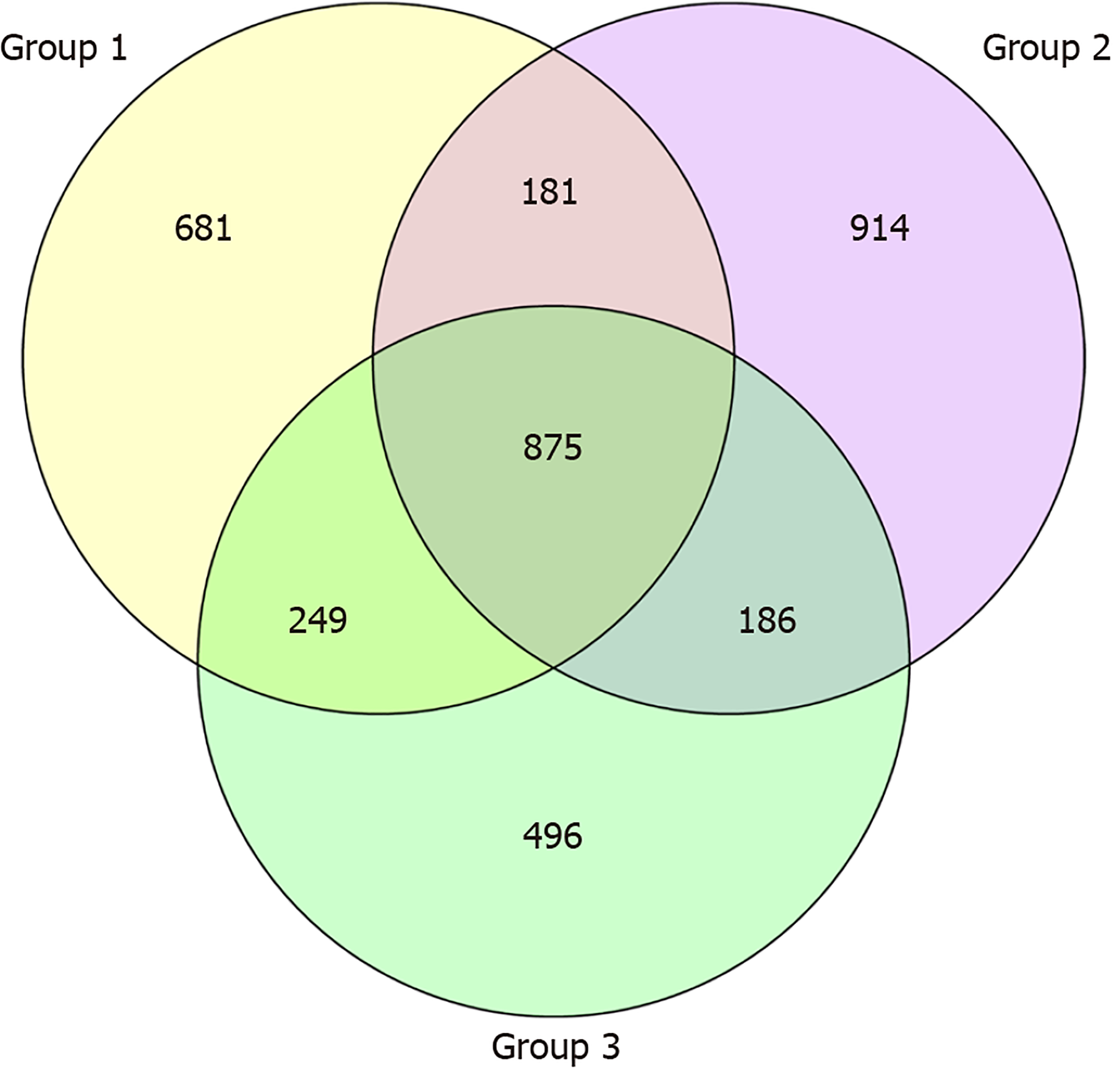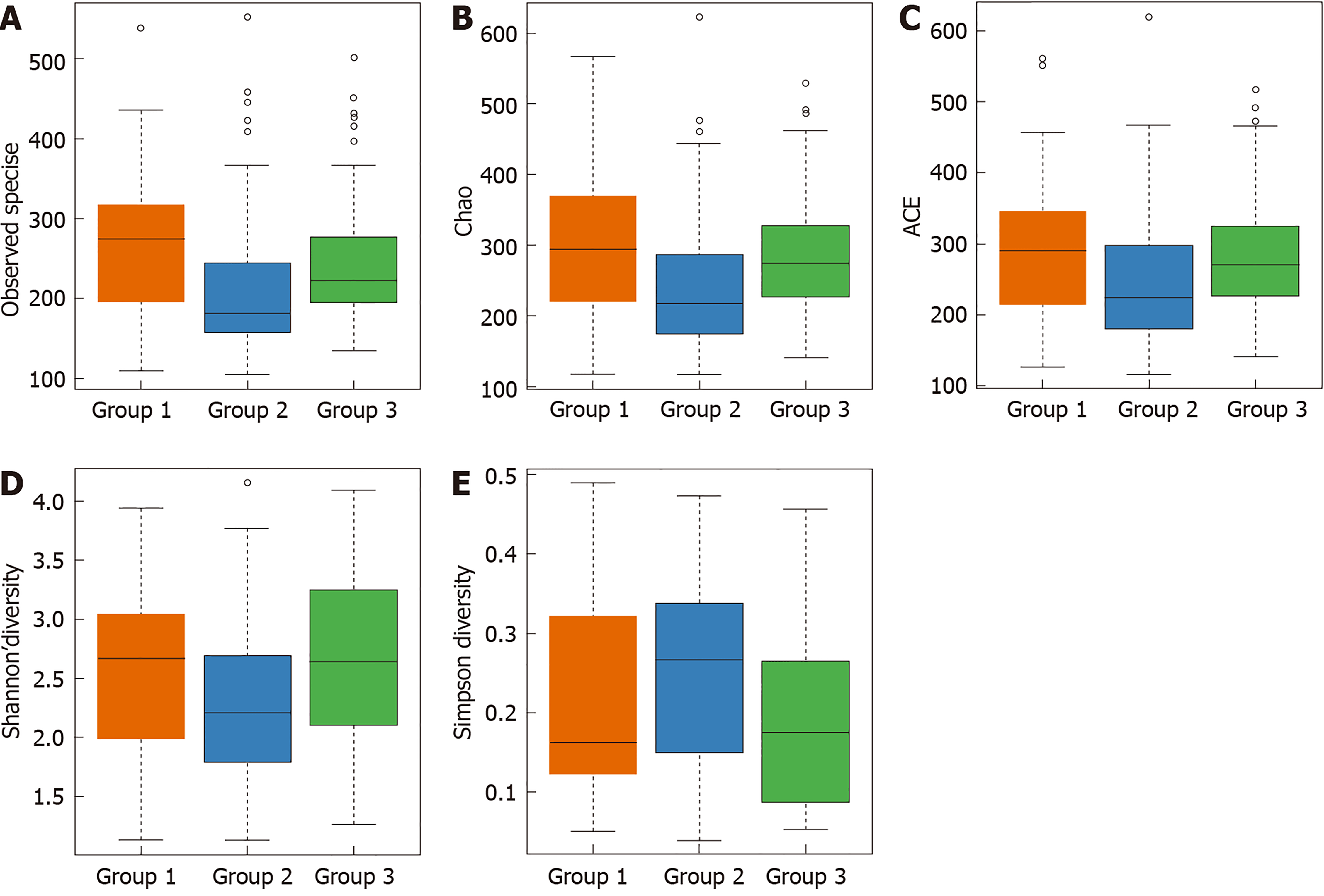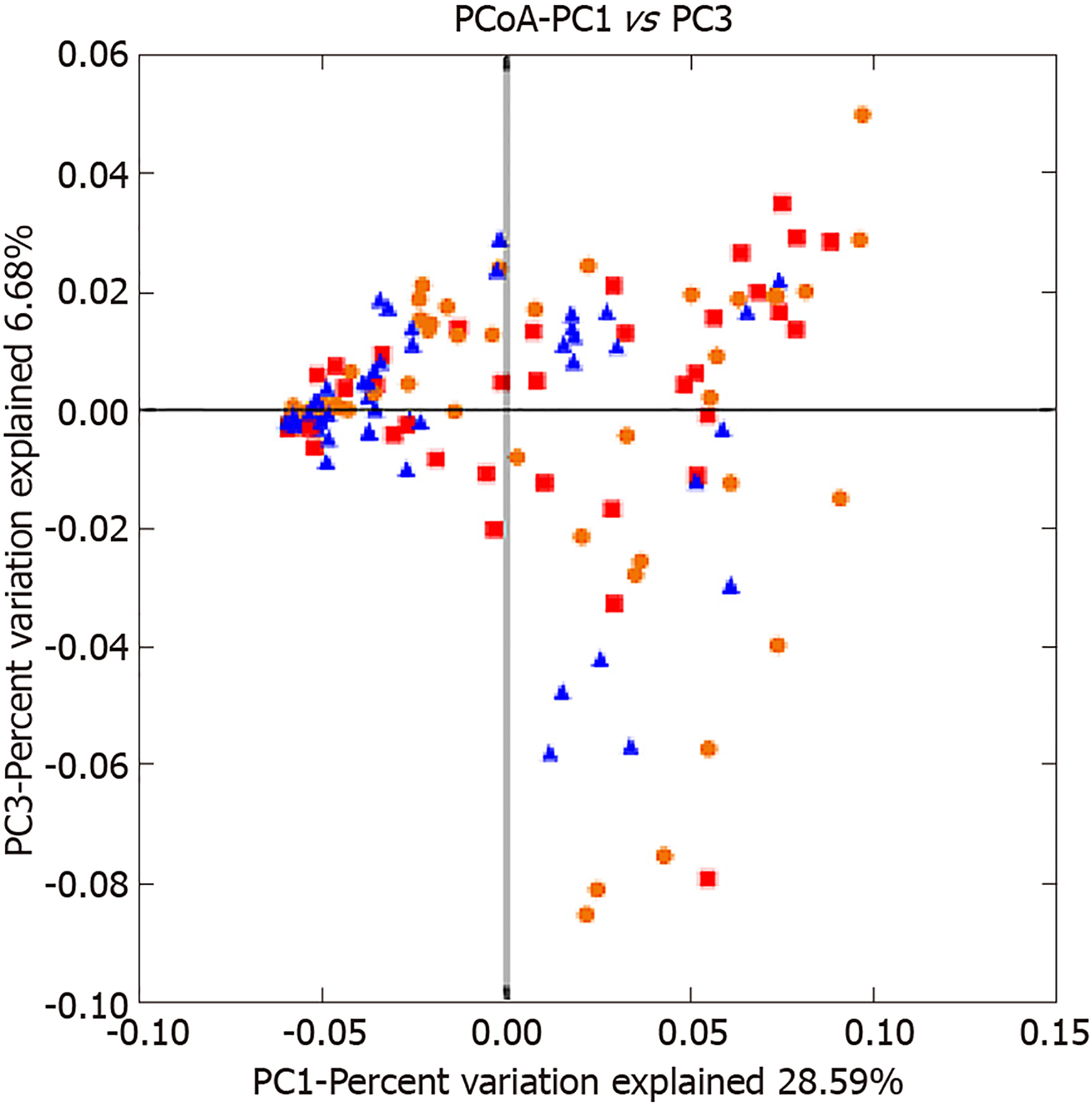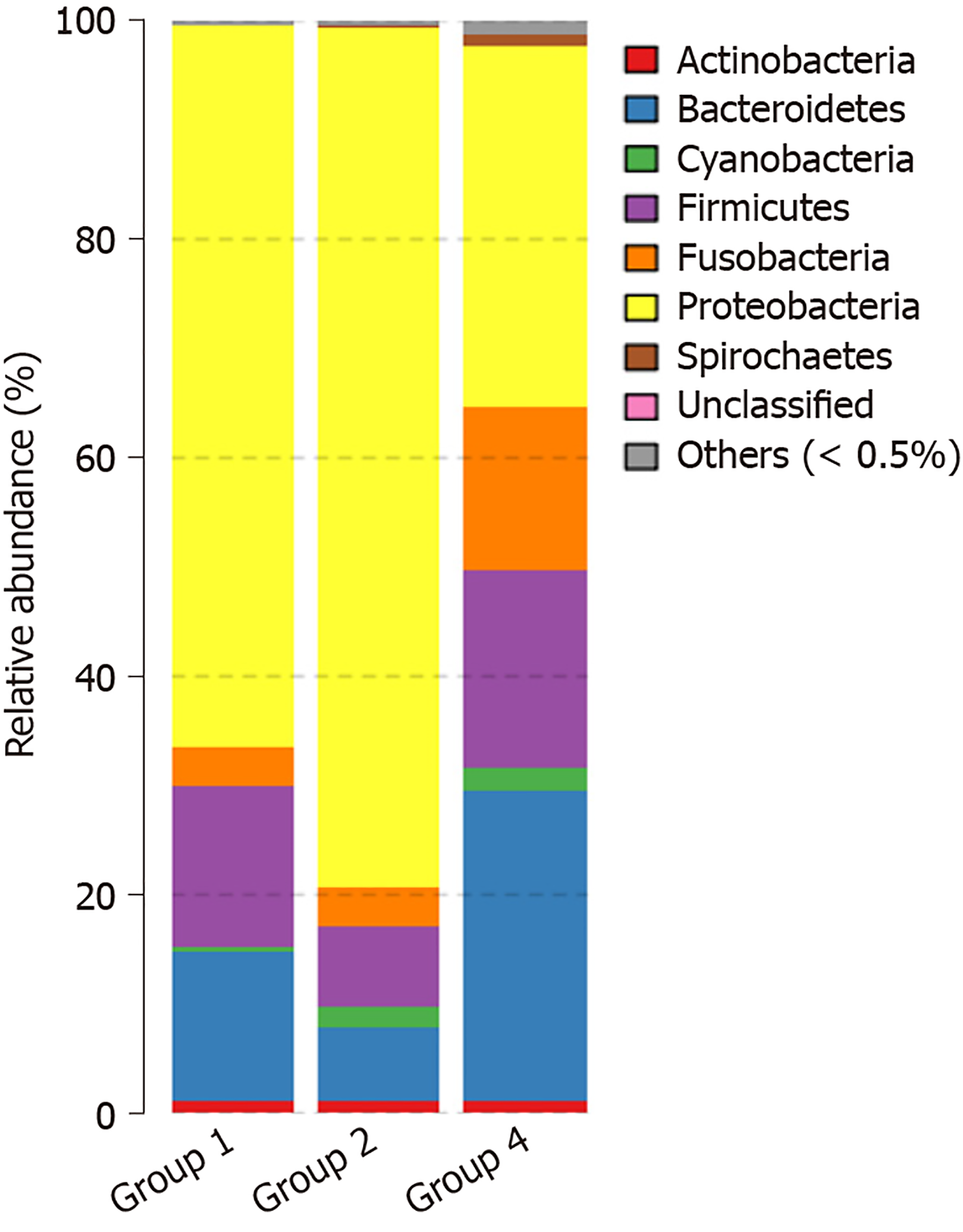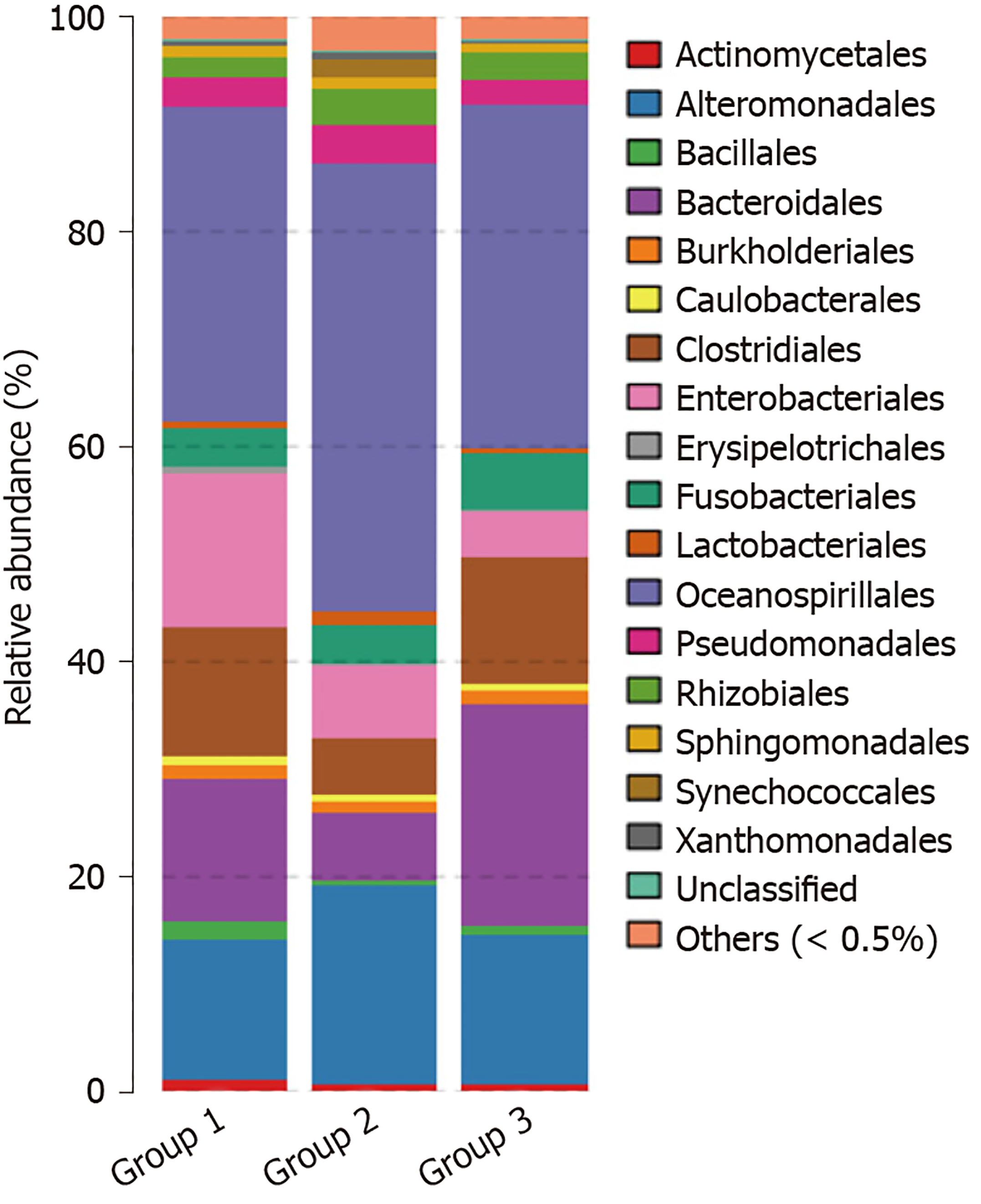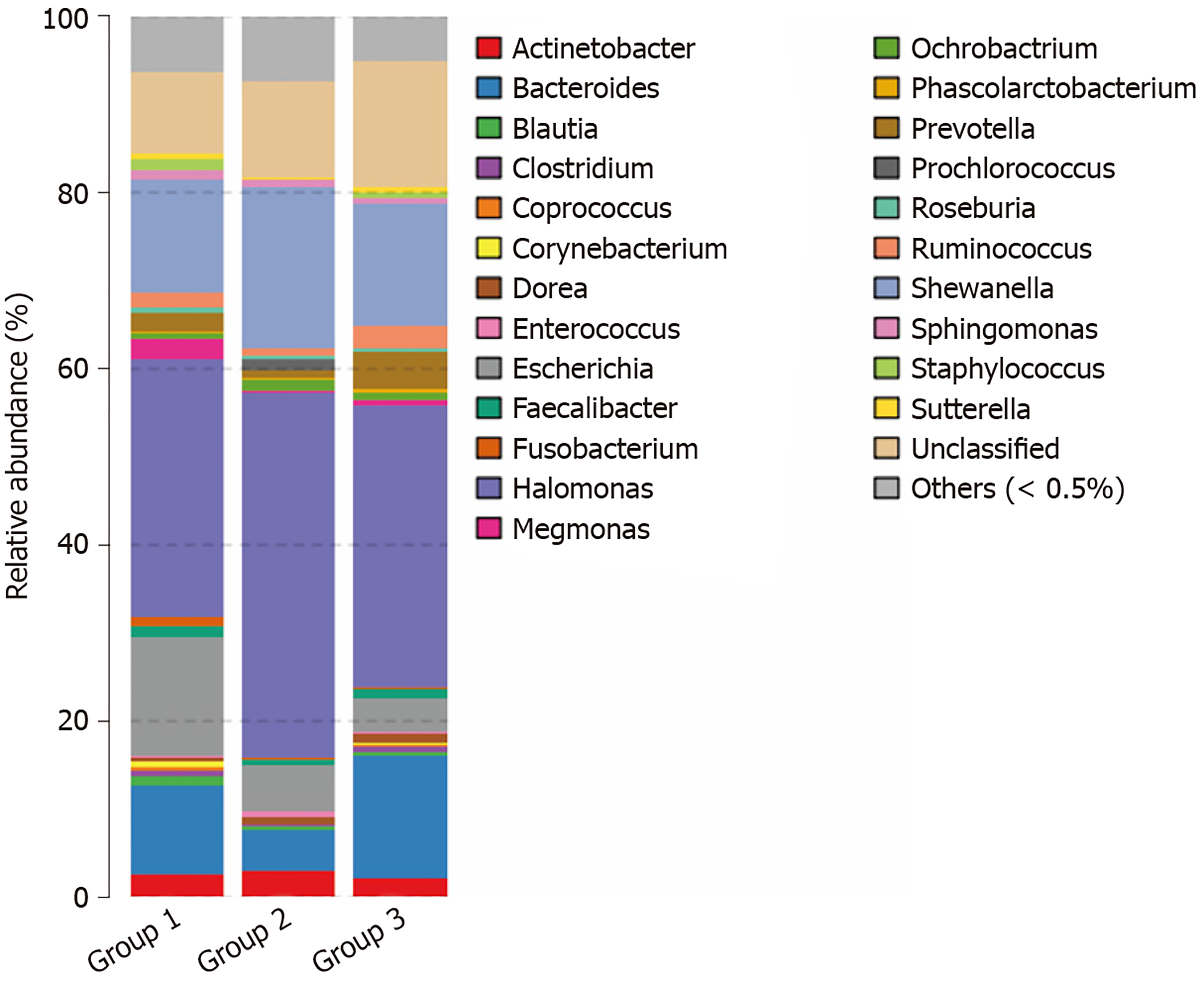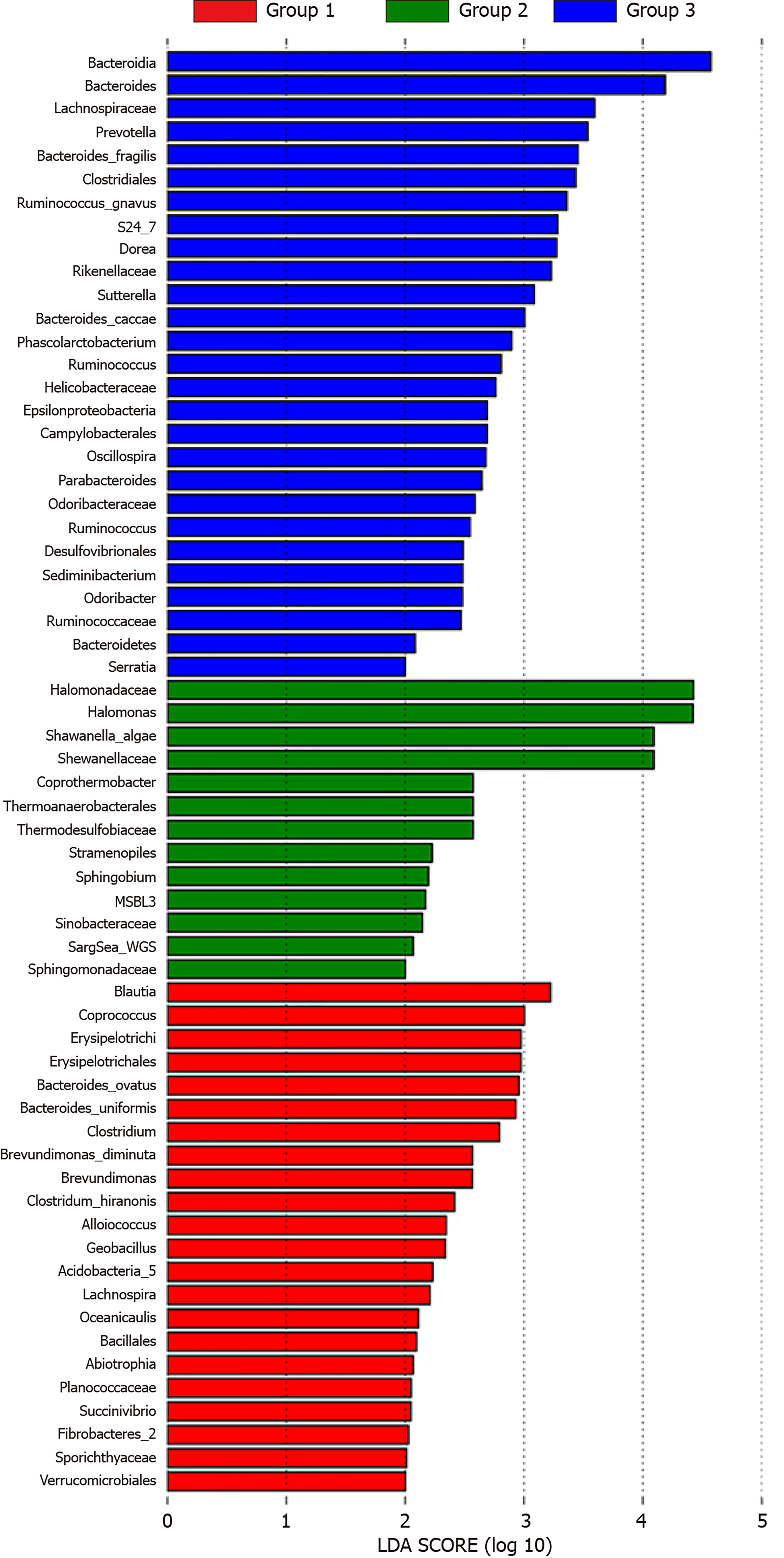Copyright
©The Author(s) 2020.
World J Gastroenterol. Feb 14, 2020; 26(6): 614-626
Published online Feb 14, 2020. doi: 10.3748/wjg.v26.i6.614
Published online Feb 14, 2020. doi: 10.3748/wjg.v26.i6.614
Figure 1 Operational taxonomic units and their abundance.
Group 1: Normal mucosa; Group 2: Colorectal adenoma mucosa; Group 3: Adjacent normal mucosa of colorectal adenoma specimens.
Figure 2 Box plots of alpha diversity among normal mucosa (group 1), colorectal adenoma mucosa (group 2), and adjacent normal mucosa of colorectal adenoma specimens (group 3).
A: Differences in the observed operational taxonomic units among normal mucosa (group 1), colorectal adenoma (CRA) mucosa (group 2), and adjacent normal mucosa of CRA specimens (group 3); B: Differences in Chao among normal mucosa (group 1), CRA mucosa (group 2), and adjacent normal mucosa of CRA specimens (group 3); C: Differences in the index used to estimate the number of OTU in the community among normal mucosa (group 1), CRA mucosa (group 2), and adjacent normal mucosa of CRA specimens (group 3); D: Differences in the Shannon index among normal mucosa (group 1), CRA mucosa (group 2), and adjacent normal mucosa of CRA specimens (group 3); E: Differences in the Simpson diversity index among normal mucosa (group 1), CRA mucosa (group 2), and adjacent normal mucosa of CRA specimens (group 3). ACE: Index used to estimate the number of OTU in the community.
Figure 3 Principal coordinates analysis of beta diversity.
PCoA: Principal coordinates analysis.
Figure 4 Heatmap of beta diversity.
Figure 5 Histograms at the phylum level.
Figure 6 Histograms at the order level.
Figure 7 Histograms at the family level.
Figure 8 Histograms at the species level.
Figure 9 Analysis of metagenome biomarkers with linear discriminant analysis of effect sizes.
- Citation: Wang WJ, Zhou YL, He J, Feng ZQ, Zhang L, Lai XB, Zhou JX, Wang H. Characterizing the composition of intestinal microflora by 16S rRNA gene sequencing. World J Gastroenterol 2020; 26(6): 614-626
- URL: https://www.wjgnet.com/1007-9327/full/v26/i6/614.htm
- DOI: https://dx.doi.org/10.3748/wjg.v26.i6.614









